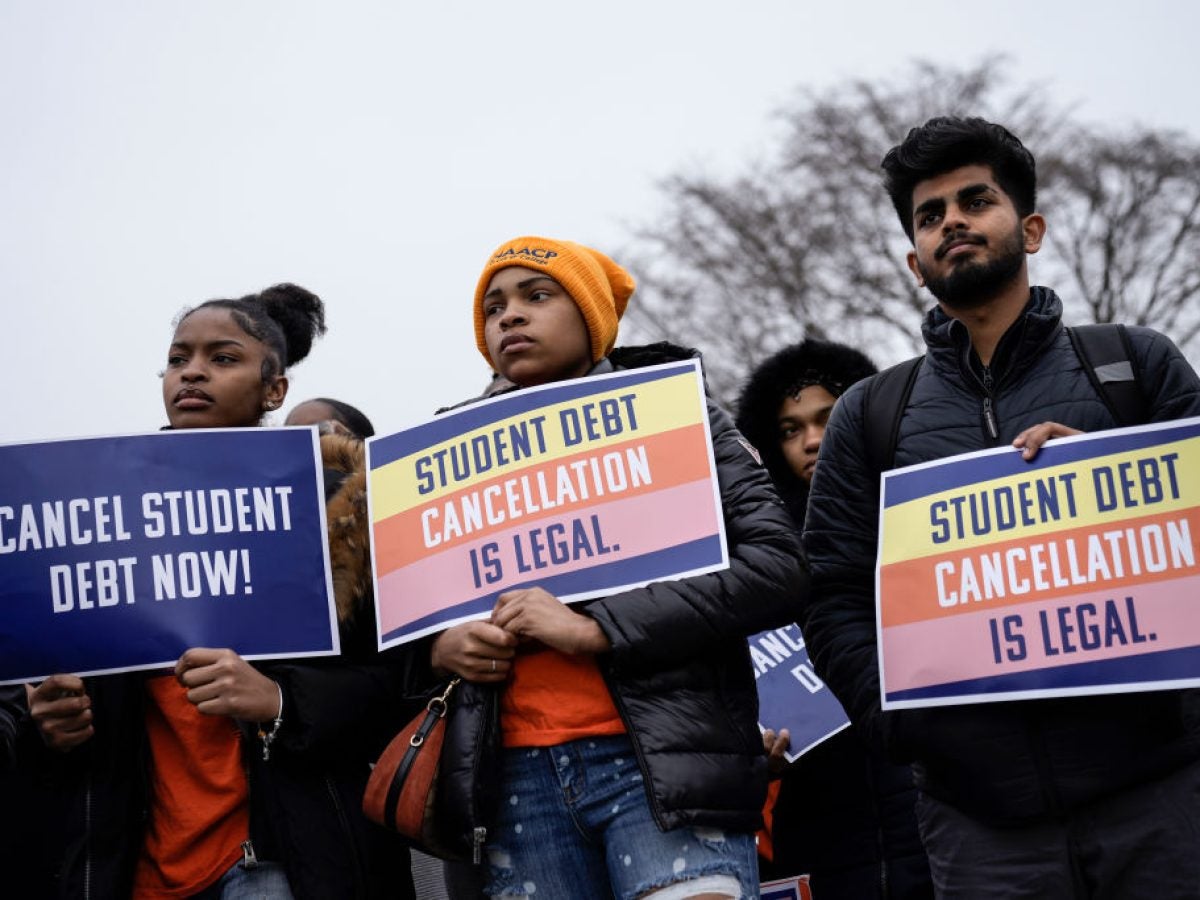
In their latest white paper, the Debt Collective and Roosevelt Institute have exposed the “false” claims behind a lawsuit to block Biden’s student loan cancellation program, keeping millions of Americans burdened by debt.
Released today, “The Suit against Student Debt Relief Doesn’t Add Up: Flawed Claims of Legal Standing in Biden v. Nebraska” delves deep into the issue, scathingly calling this case “a flawed judicial process, in which politically motivated charges get rushed to top courts, sidestepping important judicial procedures such as the rigorous scrutiny of underlying assumptions and basic fact-checking.”
For those who might be out of the loop, the decision in this case has the ability to impact 43 million Americans who collectively hold approximately $1.5 trillion dollars in student loans.
In light of the new information gleaned from this paper, ESSENCE is breaking down the who, what, why, and when for this piping hot tea about these scandalous student loan developments.
Who’s involved?
When the White House announced its new student loan forgiveness plan last year, six states (Nebraska, South Carolina, Arkansas, Kansas, Iowa, and Missouri) filed a lawsuit against the Biden administration alleging that this plan would hurt them “because they could lose out on tax revenue if individuals from their state are relieved of obligations to repay their student loans,” which the paper goes on to declare as being patently untrue.
What is happening here?
The six states are resting their case on the harm to Missouri’s student loan servicing company, the Higher Education Loan Authority of the State of Missouri (MOHELA). However, Debt Collective’s analysis shows that the “assertion of financial loss to be fundamentally false.”
As the report states:
Our new research examining this claim suggests that MOHELA’s year-over-year revenue from direct loans will actually increase substantially, even after debt relief. Assuming President Biden’s proposed cancellation goes through, we estimate that MOHELA will service more than twice the number of accounts it serviced at the beginning of the COVID payment pause.
More specifically, the white paper notes, “it will also earn nearly twice as much revenue servicing federal direct loans as it has in any year prior to cancellation” and “make more revenue the first year after cancellation is processed than it did in 2022 or any prior year.”
What’s next?
While this case has been being argued and appealed, a federal court has blocked the plan from being enacted by issuing a temporary injunction, so those with federal student loans are currently in a holding pattern. There are a couple things that could happen:
One, the court dismisses the case, determining that the respondents have no legal right to sue, and the student loan pause forgiveness pause currently in place will be lifted and the Biden administration can continue to roll their plan out. This effect would also be the same here if the court sides with the Biden administration, but the lower courts would also be bound by the decision as well.
Two, if the conservative leaning high court rules against the Biden administration, which experts expect to happen, this “would mean that federal student loan borrowers will be required to start making payments again beginning either on Sept. 1, 2023, or 60 days after the Supreme Court ruling, whichever comes first.”
Why should you care?
This case could have long-reaching effects that extend far past the issue of student loan forgiveness.
As part of the Executive Summary reads, “Should the Supreme Court affirm the plaintiffs’ suit, they would not only be sanctioning a judicial process devoid of basic fact-checking; they would potentially be establishing a ‘no feet’ theory of standing—in which plaintiffs can file suit based on claims untethered to actual, factual harms.”
Breaking it down, this is essentially setting up a dangerous precedent wherein people can sue even if something actually hasn’t happened and caused harm.
When is this all going down?
Both sides made their oral arguments before the nine justices earlier this year on February 28, and we probably won’t know the Court’s ruling until June, so until then we can only speculate. Since this white paper was released today, you can read it in full here, while you wait on the high court.